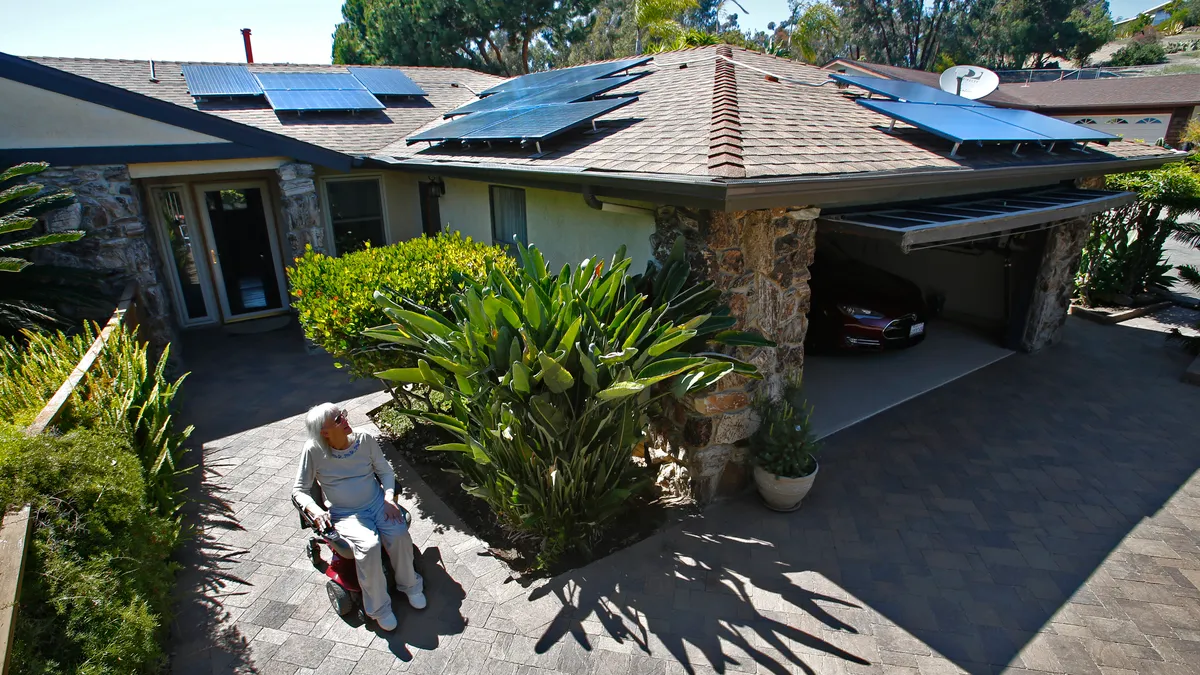Dive Brief:
-
Rooftop photovoltaic (PV) applications continue to grow in the residential space, yet a lack of experienced installers has led to shoddy work, according to Replacement Contractor.
-
Negligence by installers — such as dragging hefty panels and racks and damaging the roof structure in the process — is one factor. When damage occurs, homeowners often have no recourse because the installation may nullify their roof warranty.
-
Another factor is poor installation, such as not sufficiently sealing openings in the roof surface. In both examples, resulting damage can lead to leaks.
Dive Insight:
The solar market is expected to contract for the first time in 16 years in 2017, but not because of the installation challenges Replacement Contractor cites. Rather, the 2.4% dip forecast in megawatts generated this year is the result of major installers moving from leasing solar systems to selling them, as well as from utilities calling for a change to incentive programs.
The drop is only expected to be temporary, however. A 22% increase is projected for 2018.
Among the companies looking to benefit from the shift to system ownership is Tesla, which debuted an integrated solar-shingle PV roof this spring. Palo Alto, CA-based startup Forward Labs also rolled out a building-integrated solar roof, which will be introduced in the San Francisco Bay Area in 2018.
The solar installation space is growing, which leaves little surprise as to why industry slowdowns would be forecast as short-lived. Miami-based builder Lennar, for example, is building 180 homes at a community in southwest Florida that will be powered by an onsite, 443-acre PV system. Duplex and single-family homes there will start around $180,000 and $220,000, respectively. Other builders are teaming up with installers for clients to lease or own rooftop PV systems, while a handful of municipalities — so far all in California — require such systems.
The Department of Energy projects that solar will be used on up to 3.8 million homes by 2020. More owners taking interest in the technology for its ability to help them save energy, along with the potential for state and federal incentives to use PVs, are expected to drive the anticipated spike in solar use.












